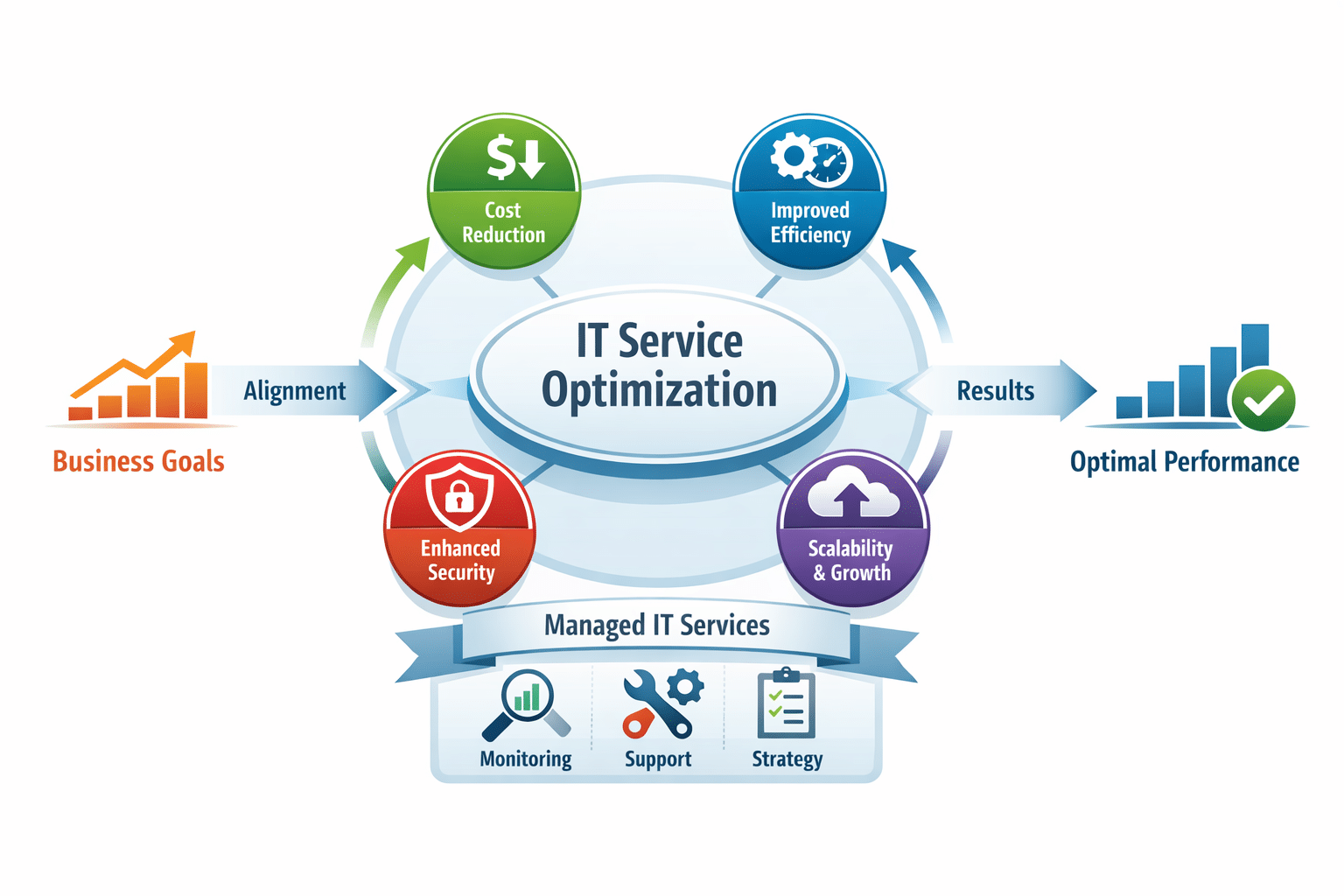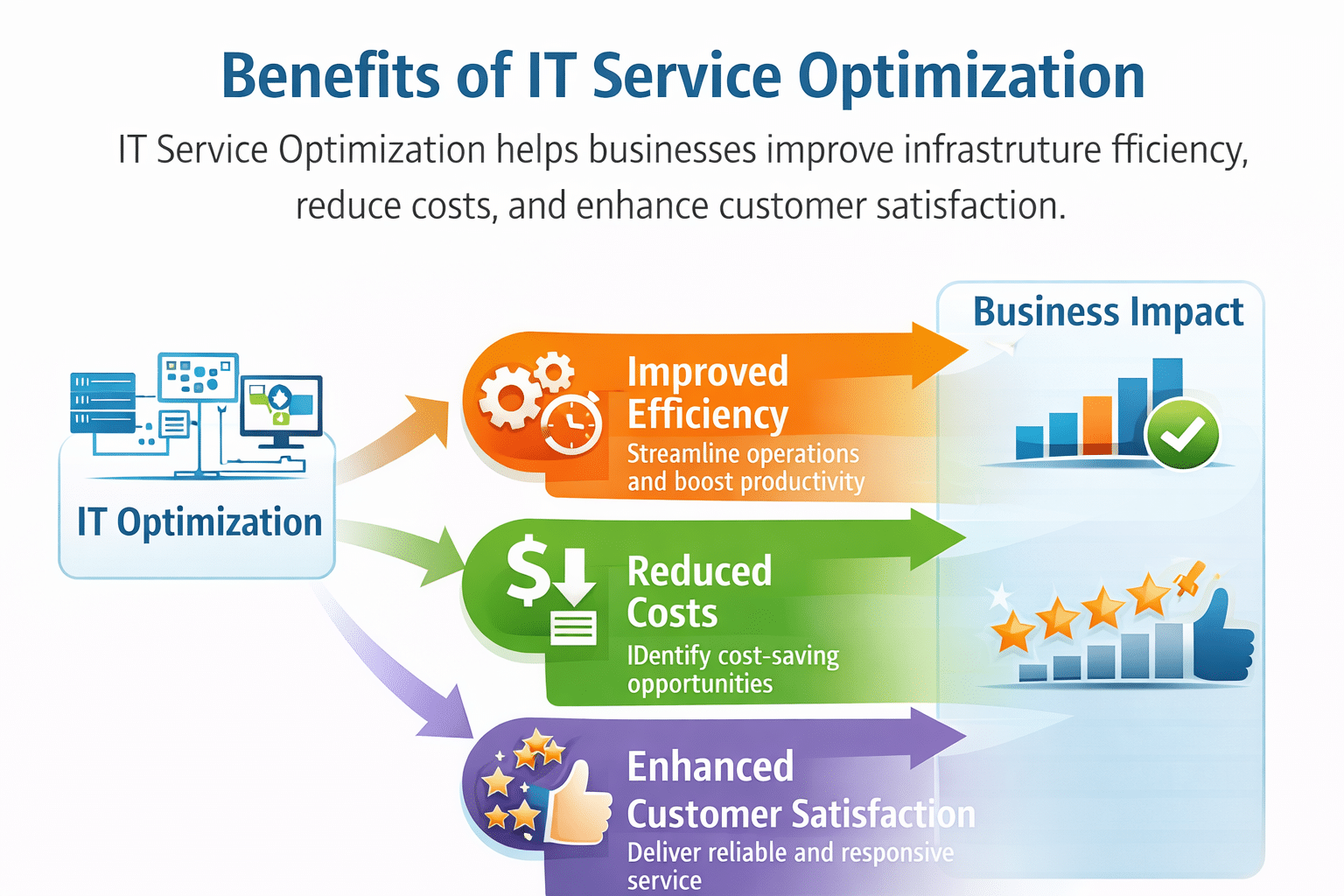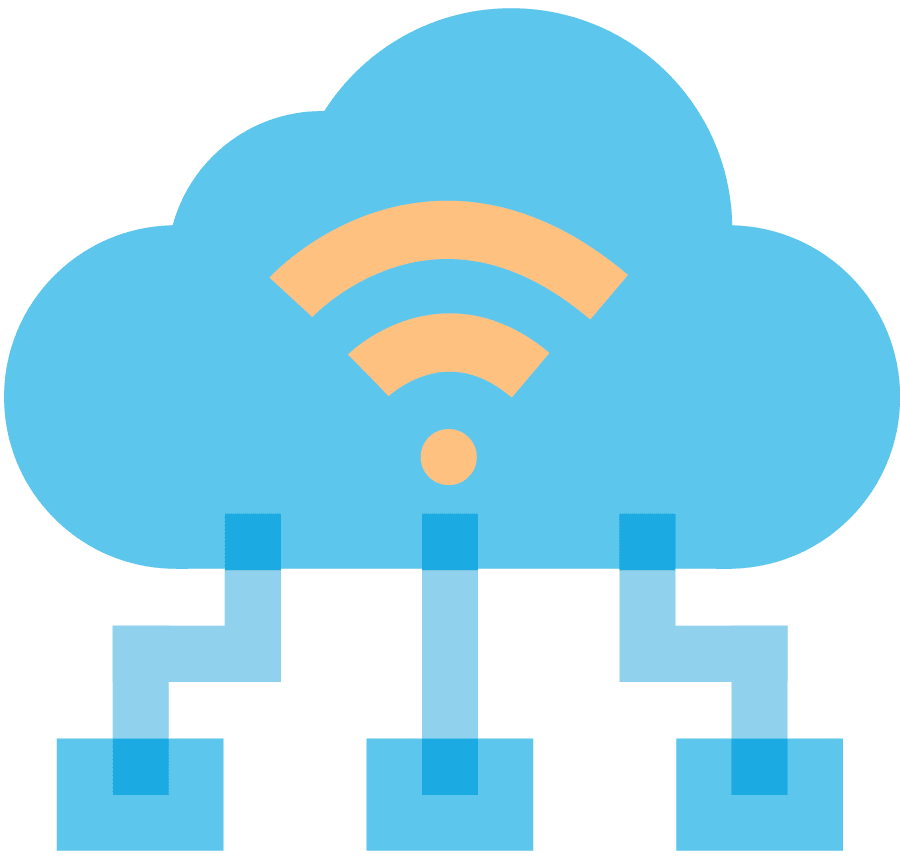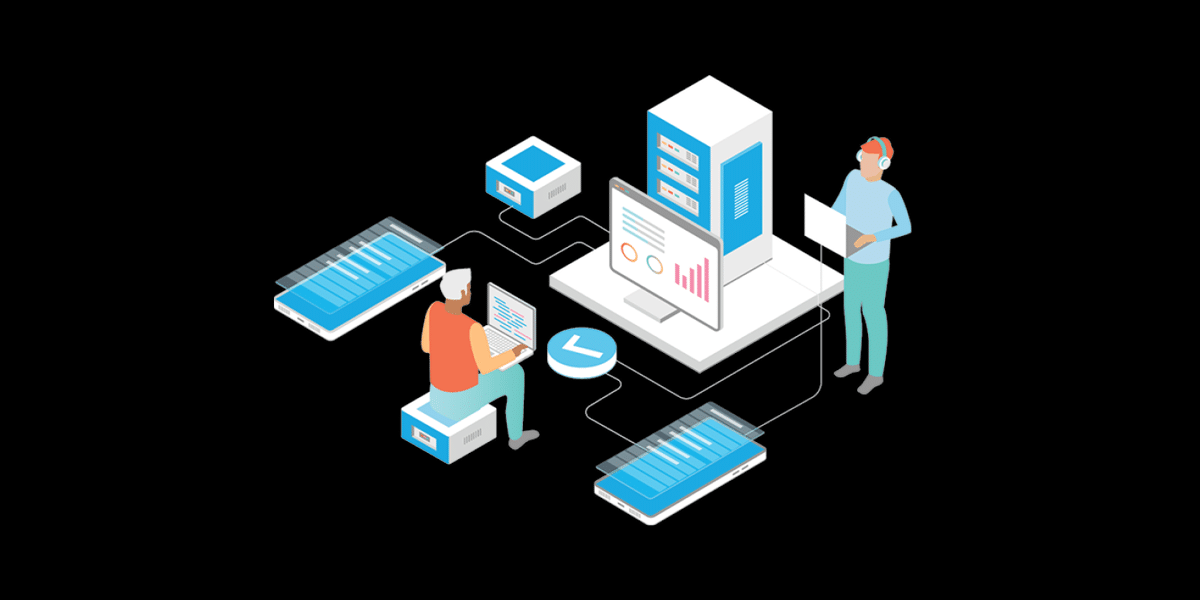When it comes to optimizing IT services, there are many factors to consider from streamlining operations to cutting costs. At Atiba.com, we specialize in IT service optimization and have a proven track record of success with Nashville businesses and the surrounding areas.
Overview of IT Optimization Services
One of the main challenges of IT optimization is the lack of resources and time. It takes work and time to successfully implement an optimization strategy and reap the benefits. However, optimizing the IT structure is an investment in the growth and success of the business as a whole and strengthens its foundation. At Atiba, we understand these challenges and work with our clients to create customized solutions that meet their unique needs.
Our team of experts has years of experience in IT optimization and stays up-to-date with the latest trends and technologies. We use a data-driven approach to analyze your current IT infrastructure and identify areas for improvement. From there, we work with you to create a customized plan that addresses your specific needs and goals. Whether you’re looking to reduce costs, improve efficiency, or enhance security, we have the expertise to help you achieve your goals.

What Is IT Service Optimization?
IT Service Optimization is the practice of evaluating and aligning IT resources, systems, and processes with business objectives to improve productivity and efficiency. This process involves identifying areas where IT services can be optimized and implementing changes to improve performance, reduce costs, and increase customer satisfaction.
IT Service Optimization is a critical element for modern organizations, as they become increasingly dependent on the use of information technology in their operations. By optimizing IT services, companies can ensure that their technology infrastructure operates at its full potential, staying ahead in a competitive landscape.
There are several benefits to IT Service Optimization, including:
- Improved efficiency and productivity
- Reduced costs
- Increased customer satisfaction
- Improved service quality
- Enhanced agility and flexibility
However, there are also several challenges to IT Service Optimization, such as:
- Complexity of IT systems
- Lack of visibility into IT processes
- Resistance to change
- Limited resources
To overcome these challenges, organizations need to develop a comprehensive IT optimization strategy. This strategy should include a detailed plan for identifying areas of improvement, implementing changes, and measuring the impact of those changes. It should also involve collaboration between IT and business teams to ensure that IT services are aligned with business objectives.
Benefits of IT Service Optimization
IT Service Optimization is a critical process that helps businesses improve their IT infrastructure’s efficiency, reduce costs, and enhance customer satisfaction. Here are some of the key benefits of IT Service Optimization:
Improved Efficiency
By optimizing IT services, we can streamline operations and reduce the time it takes to complete tasks. This results in increased productivity, improved quality of work, and enhanced customer satisfaction. IT Service Optimization can also help us identify and eliminate inefficiencies in our IT infrastructure, such as redundant processes and unnecessary delays.
Reduced Costs
One of the most significant benefits of IT Service Optimization is cost reduction. By optimizing IT services, we can identify areas where we can cut costs, such as reducing the number of servers or consolidating software licenses. This results in significant cost savings, which can be reinvested in other areas of the business, such as research and development or marketing.
Enhanced Customer Satisfaction
IT Service Optimization can help us provide better customer service by reducing downtime and improving system performance. This leads to increased customer satisfaction and loyalty, which can translate into increased revenue and profitability. Additionally, by optimizing IT services, we can provide faster response times to customer requests and address issues more quickly, which can further enhance customer satisfaction.
In conclusion, IT Service Optimization is a critical process that can help us improve our IT infrastructure’s efficiency, reduce costs, and enhance customer satisfaction. By implementing IT Service Optimization, we can streamline operations, identify inefficiencies, and provide better customer service, resulting in increased productivity, cost savings, and improved customer loyalty.

Key Principles of IT Service Optimization
As we seek to optimize IT services, there are several key principles that we must keep in mind. These principles help us to ensure that our IT services are efficient, effective, and aligned with the needs of our organization.
Continuous Improvement
Continuous improvement is a key principle of IT service optimization. By constantly monitoring and evaluating our IT services, we can identify areas for improvement and make changes to ensure that our services are always meeting the needs of our organization. This includes monitoring performance metrics, gathering feedback from users, and staying up-to-date with the latest industry trends and best practices.
Proactive Management
Proactive management is another important principle of IT service optimization. Rather than waiting for problems to arise, we must take a proactive approach to managing our IT services. This means identifying potential issues before they become problems and taking steps to prevent them from occurring. It also means having a plan in place for responding to unexpected issues and minimizing their impact on our organization.
Strategic Alignment
Finally, strategic alignment is a critical principle of IT service optimization. Our IT services must be aligned with the strategic goals and objectives of our organization. This means understanding the needs of our stakeholders and ensuring that our IT services are designed to meet those needs. It also means regularly reviewing our IT services to ensure that they remain aligned with our organization’s goals and objectives.
By keeping these key principles in mind, we can ensure that our IT services are optimized for efficiency, effectiveness, and strategic alignment with our organization’s goals.
Implementing IT Service Optimization
To implement IT service optimization, we need to follow a structured approach that includes different phases. Each phase is critical to the success of the entire optimization process. The following sub-sections outline the steps that we need to take to implement IT service optimization.
Assess Current State
The first step in implementing IT service optimization is to assess the current state of our IT services. This involves identifying the strengths and weaknesses of our existing IT infrastructure, processes, and services. We need to gather data and metrics that can help us understand the performance of our IT services. This data can include service-level agreements (SLAs), incident reports, and customer feedback.
Define Goals
Once we have assessed the current state of our IT services, we need to define our optimization goals. We need to identify the areas where we want to improve our IT services and set clear, measurable, and achievable goals. These goals should be aligned with our business objectives and should focus on improving the quality, reliability, and efficiency of our IT services.
Develop Strategy
After defining our optimization goals, we need to develop a strategy to achieve them. This involves identifying the key initiatives and activities that we need to undertake to optimize our IT services. We need to prioritize these initiatives based on their impact and feasibility and develop a roadmap for their implementation.
Execute Plan
Once we have developed our optimization strategy, we need to execute our plan. This involves implementing the initiatives and activities that we have identified in our roadmap. We need to ensure that we have the necessary resources, skills, and tools to execute our plan effectively. We also need to communicate our plan to our stakeholders and ensure that they are aware of the changes that we are making to our IT services.
Monitor and Adjust
Finally, we need to monitor the performance of our IT services and adjust our optimization plan as needed. We need to track our progress against our optimization goals and metrics and identify any gaps or issues that need to be addressed. We also need to be flexible and adapt our plan to changing business requirements and emerging technologies.
By following these steps, we can implement IT service optimization successfully and achieve our optimization goals.

Challenges in IT Service Optimization
Optimizing IT services is a complex and challenging task that requires careful planning, execution, and monitoring. We have identified several challenges that organizations face when trying to optimize their IT services.
Resistance to Change
One of the biggest challenges in IT service optimization is resistance to change. Many employees are comfortable with the status quo and are reluctant to adopt new processes and technologies. This can lead to delays in implementing new optimization strategies and can also undermine the effectiveness of existing ones.
To overcome resistance to change, it is important to communicate the benefits of optimization clearly and to involve employees in the process. This can help to build buy-in and support for optimization efforts.
Lack of Clear Strategy
Another common challenge in IT service optimization is a lack of clear strategy. Without a clear strategy, organizations may struggle to identify which services to optimize, how to optimize them, and how to measure the effectiveness of optimization efforts.
To address this challenge, it is important to develop a clear optimization strategy that aligns with the organization’s overall business goals. This should include a roadmap for optimization that outlines the specific services to be optimized, the optimization methods to be used, and the expected outcomes of optimization efforts.
Inadequate Resources
Finally, inadequate resources can also be a significant challenge in IT service optimization. Organizations may lack the necessary budget, staff, or technology to implement optimization strategies effectively.
To overcome this challenge, it is important to prioritize optimization efforts based on their potential impact and to allocate resources accordingly. This may involve reallocating resources from less critical areas or seeking additional funding or staffing to support optimization efforts.
In summary, optimizing IT services can be a challenging task that requires careful planning, execution, and monitoring. By addressing common challenges such as resistance to change, lack of clear strategy, and inadequate resources, organizations can improve their chances of success and achieve better outcomes from their optimization efforts.
Future Trends in IT Service Optimization
As we move towards the future, IT service optimization is expected to become more advanced and efficient. Here are some of the future trends that we can expect in IT service optimization:
Automation
Automation is expected to become more prevalent in IT service optimization. With the use of automation tools, we can automate repetitive tasks, reduce the risk of human error, and improve the overall efficiency of IT service optimization. Automation tools can help us to monitor and manage IT infrastructure, detect issues, and resolve them automatically.
Artificial Intelligence
Artificial intelligence (AI) is expected to play a major role in IT service optimization. With the use of AI, we can automate more complex tasks, improve the accuracy of IT service optimization, and provide better insights into IT infrastructure. AI can help us to analyze large amounts of data, identify patterns, and predict issues before they occur.
Cloud Services
Cloud services are expected to become more popular in IT service optimization. With the use of cloud services, we can reduce the cost of IT infrastructure, improve the scalability of IT services, and provide better accessibility to IT services. Cloud services can help us to deploy IT services faster, reduce the risk of downtime, and provide better security for IT infrastructure.
In conclusion, IT service optimization is expected to become more advanced and efficient in the future. With the use of automation, AI, and cloud services, we can improve the overall efficiency of IT service optimization, reduce the risk of downtime, and provide better accessibility to IT services.

Atiba for IT Service Optimization
At Atiba, we offer customized IT service optimization solutions that can help businesses achieve their goals. With our managed IT support services, we can help businesses improve the efficiency of their IT operations, leading to better productivity and cost savings. Our team of experts can provide strategic guidance to help businesses make informed decisions about which technology solutions are best for their unique needs.
Our IT consulting services can help businesses ensure their data and networks are secure and protected against unauthorized access. We can provide guidance on the best security practices and implement solutions to safeguard your business.
Our cloud management services can help businesses automate common cloud management tasks, such as scaling, backups, and deployments, and provides real-time monitoring and usage reporting to help you better understand your cloud usage and optimize your cloud deployments. We also offer disaster recovery and business continuity planning to ensure that your business can continue to operate even in the event of a disaster.
With Atiba, you can expect reliable and responsive support from our team of experienced professionals. We offer on-site support for network security, technical support, computer network monitoring, and help desk services. Our goal is to help your business achieve its goals by providing customized IT solutions that meet your unique needs.
Contact us today to learn more about how we can help your business optimize its IT services.








